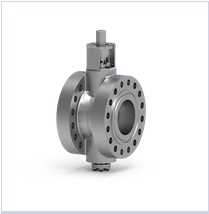Sep-2016
Automation of tank farm systems
Automation helps to streamline operations as well as supply and demand planning, sales orders and inventory in tank management.
JIJNASA PANIGRAHI and ARUN KUMAR S
Helium Consulting
Viewed : 15141
Article Summary
Refinery tank farms are the largest units in terms of numbers of plant items in any refinery. Refineries handle a huge stock of crude oil and product inventories, which invariably involves high capital investment. Accurate inventory is critical to terminal operations and to reconciling hydrocarbons within the plant. However, the complex and dynamic nature of the operation can make it difficult to pinpoint current tank levels or predict a refinery’s future inventory. This can result in increased operational expense to fulfill existing commitments and an inability to execute future orders. This article focuses on new horizons in the field of automation in tank farm management systems and also highlights the challenges arising.
Challenges in refineries
Refineries continuously strive to better their standards and uphold effective best practices in the areas of operation, accounting, loss control and overall hydrocarbon management to deliver significant cost savings and reduce their environmental impact. To improve their hydrocarbon management, refineries should continuously evaluate their perception of the principles and effects of the measurement of oil movement and storage to understand the errors involved. This should help them towards better management of hydrocarbon inventory.
Refiners are under pressure to increase refining margin by reducing inventory, optimising crude mix and reducing product quality giveaway at the same time as producing more grades to tighter product and environmental specifications. Economic benefits result from improved planning and scheduling, coupled with tighter control and increased operational assurance and flexibility.
Refinery tank operations involve a list of tasks and oil movements like crude receipt and storage, process unit feeds and crude blending, process unit rundowns, intermediate product storage, component storage, blended product storage and dispatch through ships, pipeline, road trucks and rail wagons. Significant improvement in the operation and management of the off-sites can be achieved through refinery automation.
The main challenges faced are:
• Executing an effective daily reconciliation of oil movements
• Handling huge data collection and manual entry
• Quantification of individual unit-wise loss recorded
• Unaccountable loss due to errors
• Eliminating property giveaway in product blending
• Reconciliation of estimated production data with actual data from the refinery
• Optimum production planning objectives.
Automation is the solution
Automation of oil movement and storage and control system helps to:
• Reduce operating cost
• Optimise blending
• Provide better planning by opening up opportunities for optimisation in feedstock selection
• Reduce inventory
• Reduce routing error
• Provide incident and slop analysis.
Oil movement and storage automation enables all tank farm and loading bay processes to be managed and automated with maximum consistency and according to standards. This can be done on three levels:
• Field: automation at the field device level
• Operations: automation at the management execution system (MES) level
• Business: closing the loop by integrating oil accounting into the enterprise systems (ERP).
This would allow the refinery to monitor all its automated processes and ensure rapid identification of problems as well as savings in both time and money. Many companies have already implemented filed automation and enterprise ERP systems that are capable of handling the first and third levels. In this article, we are discussing the second level, the operations level (see Figure 1).
Data gathering, reconciliation, yield accounting or oil accounting, and refinery information reporting systems are essential in automating refinery oil movement and storage systems. Automation in oil movement and storage calls for a detailed definition of complete system integration for effective functioning of the automated system. Automated oil movement and storage might include a complex business procedure involving comprehensive daily analysis of all flows, oil movement data, lab data and inventory data. Normally, these different data types are from different sources, and integration of all these data into a single system as an input for an oil movement and storage business process is an absolute necessity.
MES helps in tracking and optimising operations with rapid, accurate and transparent movement of data in real time. It helps in better understanding how tank operations are being performed in real time. This would have a positive impact on operations and business, as it would help in timely and informed decision making about inventory and production performance.
Data historian
Every refinery generates significant volumes of data but encounters difficulty in leveraging information effectively without a good MES layer. A data historian makes it easy for the refinery to handle large amounts of data generated by the plant and other areas of operation. It ensures that historical data is readily available to users for analysis. In this case, it ensures that data is readily available for other systems and applications for oil movement and storage. For example, for movement and yield calculation, flows of streams and their respective temperatures and pressures are normally obtained from a refinery historian, and inventory data is obtained from the tank gauging system. MES is the foundation for integrating and connecting plant control systems and the shop floor with business systems.
Tank operation
The key to refinery profitability is being able to plan, schedule and optimise operations based on real-time information with feedback on what is currently happening and what has actually been done, in order to regulate refinery operations:
• Starting, stopping and tracking of all movements
• Improved automation sequences, thereby increasing operator efficiency and reducing contamination of products
• Scheduling automation of oil movements
• Reporting and monitoring of actual quantities
• Improved oil loss accounting, using better quality real-time data for material balancing
• Automated workflows to support production processes
• Automated data collection from tank and related auxiliary equipment and sensors
• Management and tracking of material within work centres and across work centres
• Generation of tank area documentation and management reporting on fuel and losses.
Add your rating:
Current Rating: 4

















